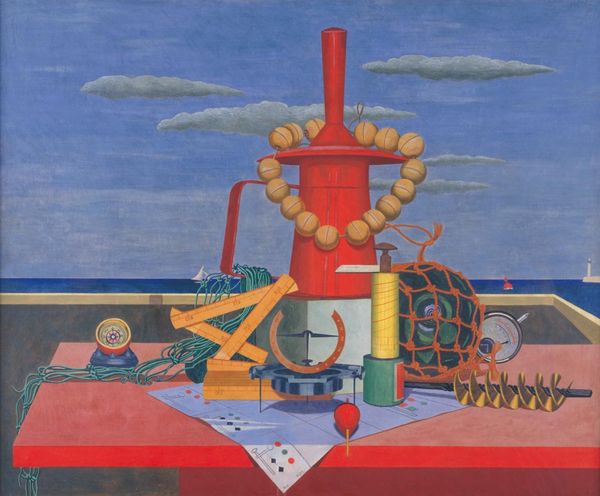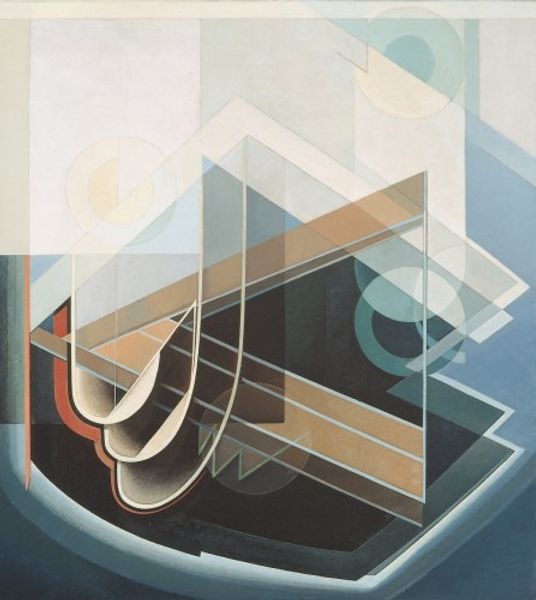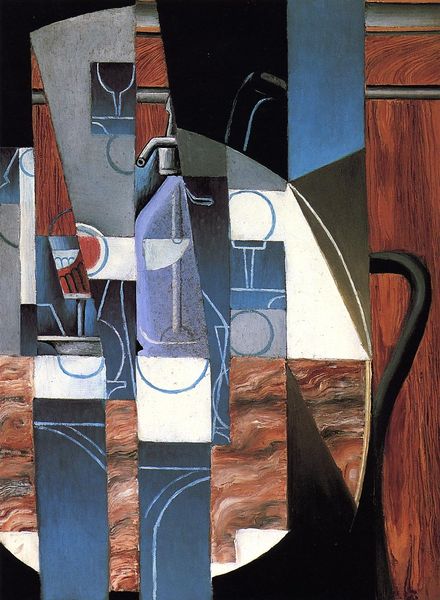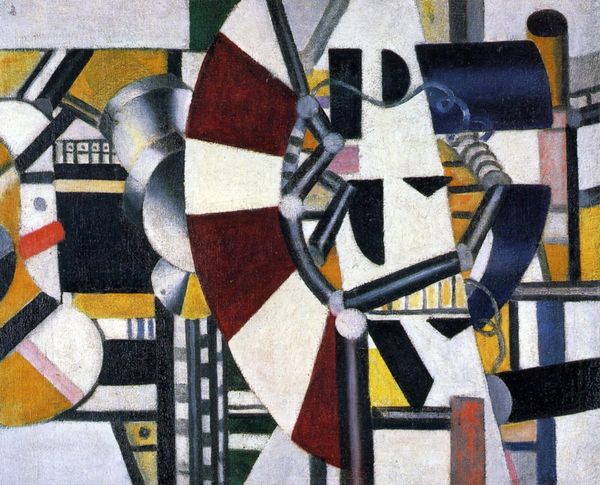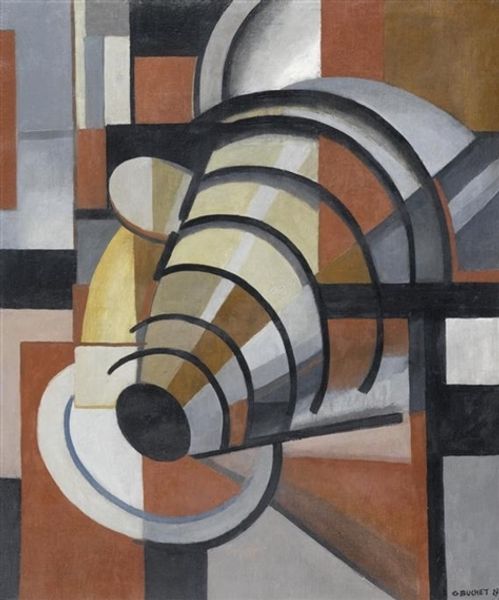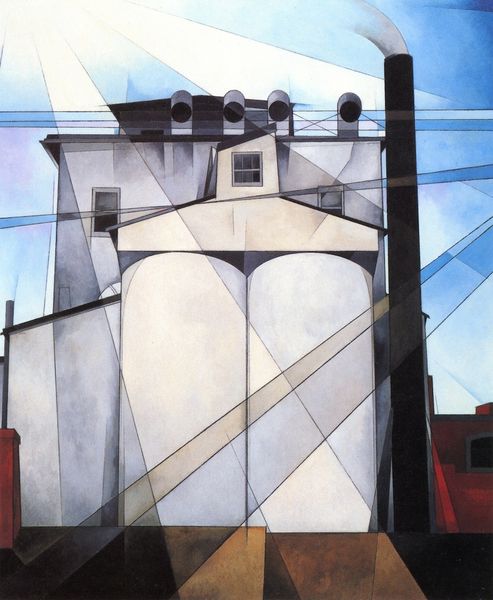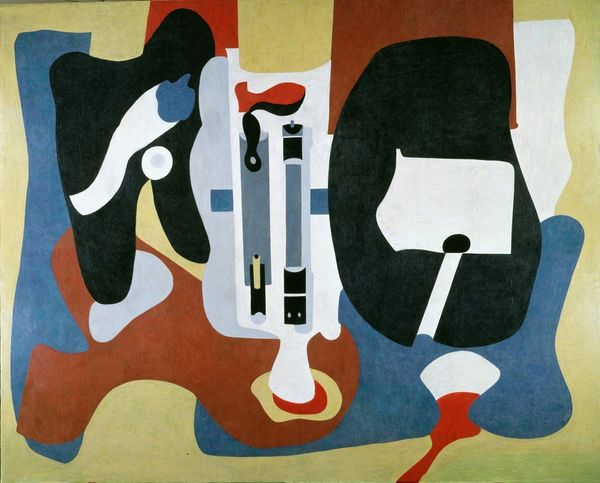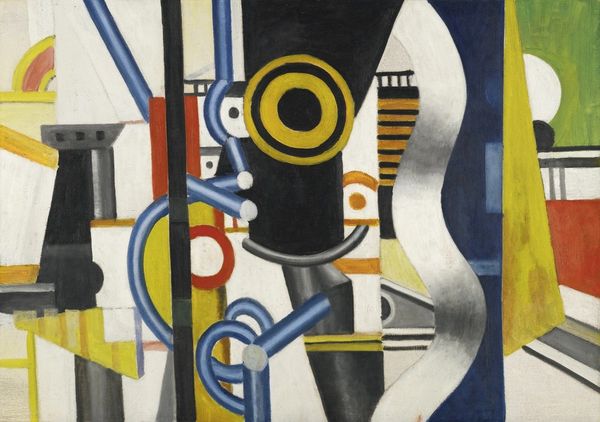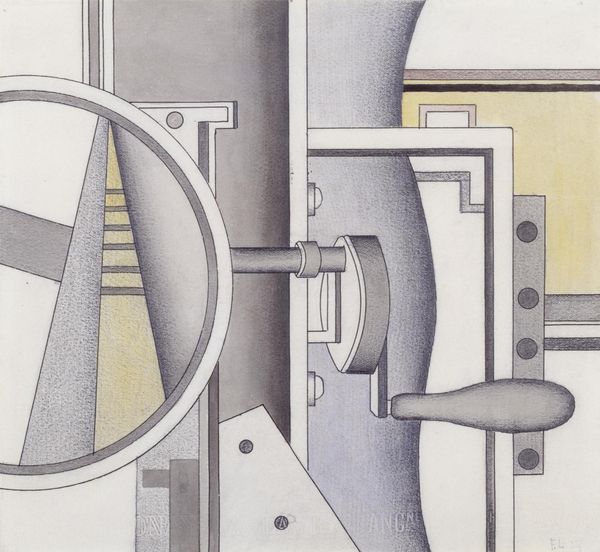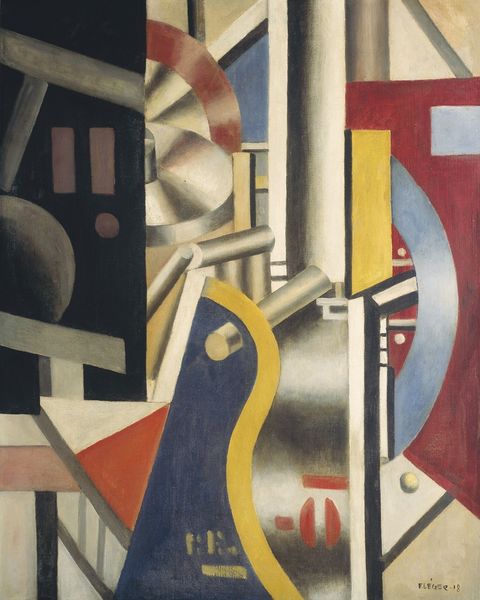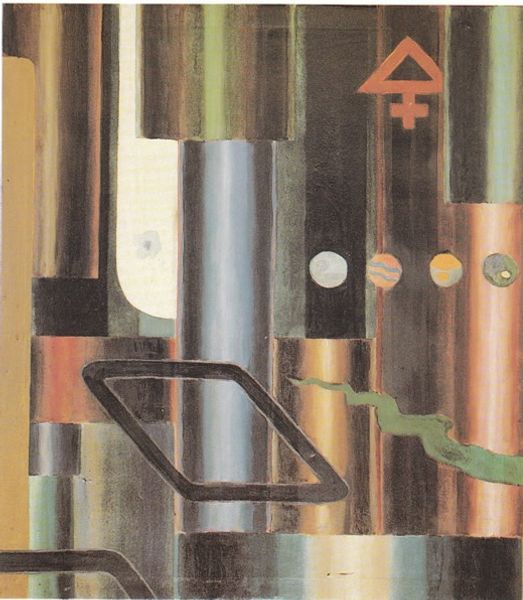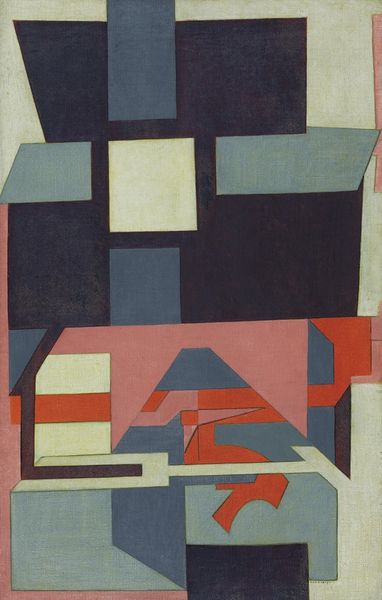
painting, oil-paint
#
precisionism
#
painting
#
oil-paint
#
geometric
#
line
#
cityscape
#
modernism
Copyright: Public domain
Curator: Charles Demuth's "Paauebot 'Paris," painted in 1922, presents a striking composition in oil on canvas. Editor: My immediate reaction is one of awe. The artist seems to have captured something powerful and perhaps even dangerous, like a sleeping industrial beast. Curator: Precisely. Demuth's Precisionist style emphasizes the geometric forms of industry. Consider the sheer labor embedded within those represented objects—the forging of the steel, the drafting of the designs, the labor to keep the engines moving! The streamlined shapes speak volumes about industrial modernity and its impact on the social fabric of the roaring twenties. Editor: I see those forms as symbols of that era's ambition. The towering structures, the bold colors—the stark contrast between red and the sky's serene blue evokes a sense of human domination over nature. Note the smokestack—phallic imagery aside—it points directly towards the heavens as though the ship seeks to reach the sky itself. Curator: The smokestacks are indeed powerful. Demuth also isolates them from a broader scene of the city, highlighting their independent, almost sculptural, presence, further enhanced by his employment of light and shadow, creating texture to give the object's shape more density. His artistic approach mirrors the efficiency of mass production itself: each element is meticulously crafted and standardized. Editor: The way the geometric shapes interplay does give me that sensation. It’s not a soft, romantic Paris of leisure and art; it's an abstract portrait of ambition and strength, mirroring ancient pagan monumentality. Look at that brilliant, precise structure. Is that structure trying to be god? Is that a blasphemy of humanity through industry? The city became the new mythology of our cultural development, and as such the artist's rendering became one that worshiped this god. Curator: You make a point that these towering ships became almost holy, especially regarding modernity's progression of productivity. As artists, filmmakers, and architects alike embraced the possibilities for creation, as factories, ships, trains, etc. gained cultural appreciation as powerful forces in production—both literal and figurative. Editor: Exactly. Demuth saw that this industry had changed not just our landscape but also our collective consciousness. In other words, if we seek a future symbol of hope, and our vision to move forward...maybe the smokestacks from “Paauebot 'Paris” serve as that image today. Curator: This piece makes it easy to read industry with complexity and to view its effects on our landscape and psyche with nuanced interpretation.
Comments
No comments
Be the first to comment and join the conversation on the ultimate creative platform.
